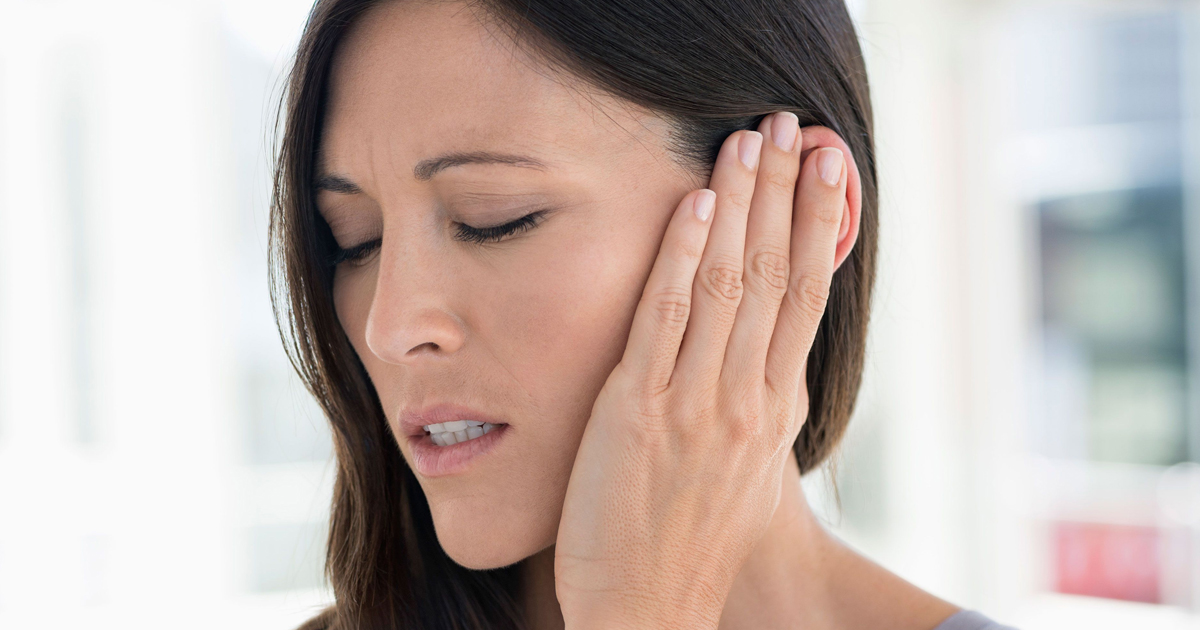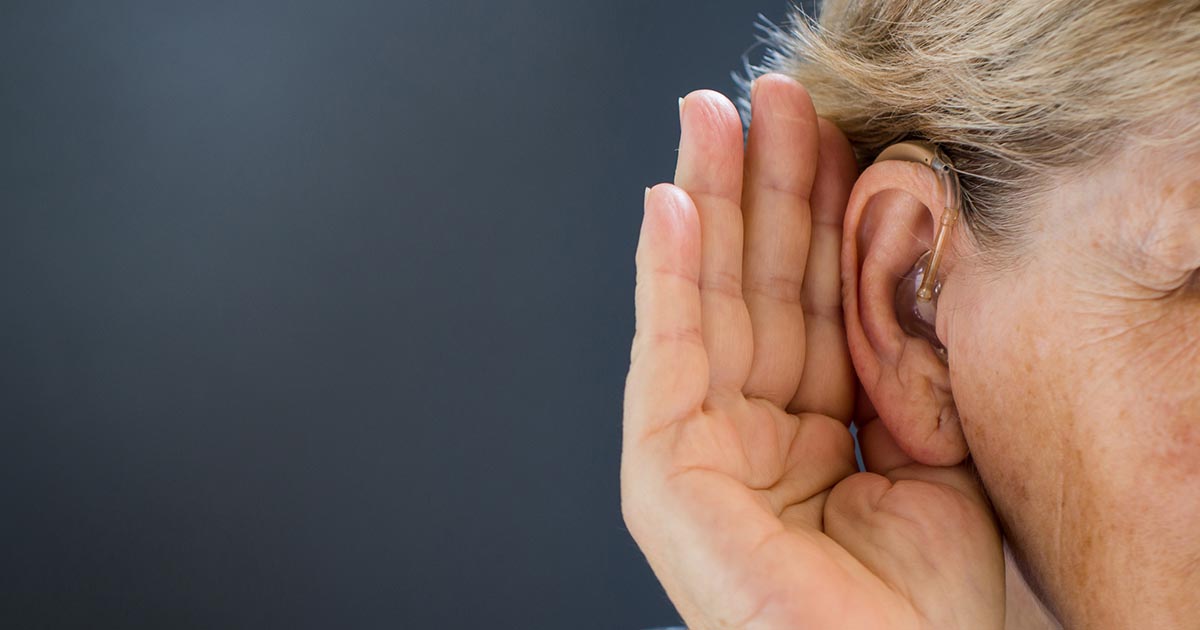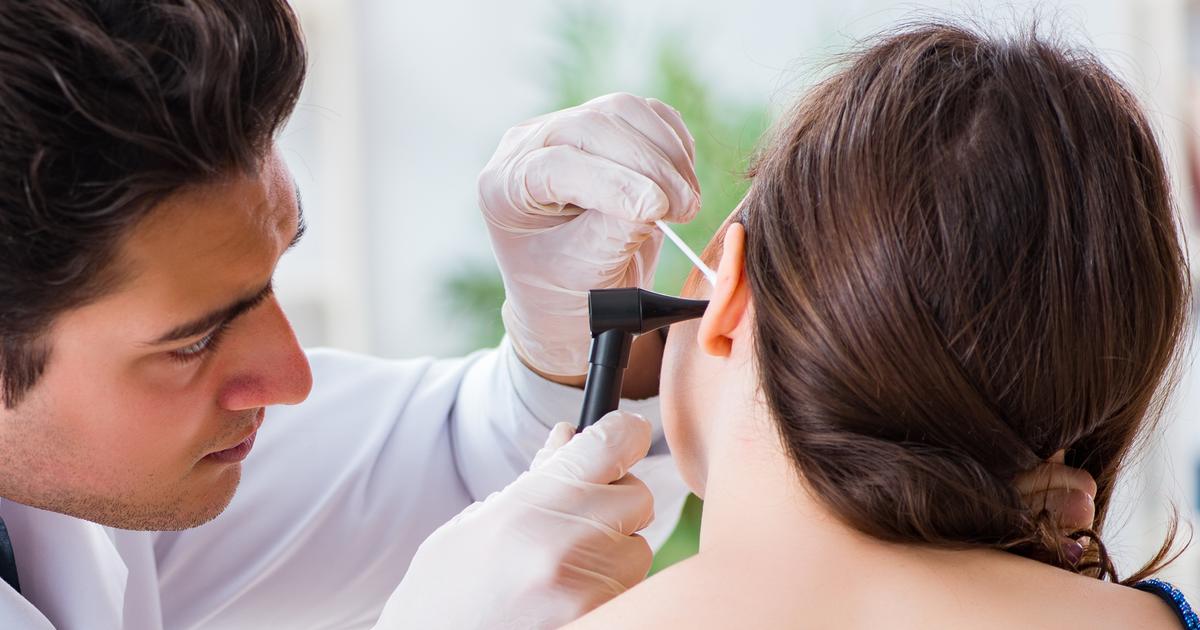Symptoms Of A Ruptured Eardrum
Rupturing of the eardrum can occur from a blow to the head, an object pushed into the ear, severe barometric pressure, inner ear infections or from very loud noises. The event can cause significant discomfort and a variety of other symptoms. Ruptured eardrums occur more frequently in children, because of the sensitivity of the ear tissues and narrowness of the ear canal. A ruptured eardrum will generally heal within a few weeks, but complications may occur that lead to loss of hearing or greater susceptibility to infection. If individuals experience any of the following symptoms, they may have ruptured their eardrum and should seek immediate medical attention to prevent complications that can occur.
Ringing In The Ear

Individuals may begin to suspect a ruptured eardrum when they experience a noticeable ringing of the ears after an incident, though it can also present as buzzing or clicking. The clinical term for ear noise is tinnitus, and it is a common problem in war veterans, seniors, and other individuals who have experienced loud noises over a prolonged period. However, when a ruptured eardrum is involved, the noise begins suddenly after the event and may be quite loud. Individuals who experience a head injury or exposure to very loud noises that cause tinnitus should make an appointment with a specialist to have the problem investigated and receive appropriate treatment.
Keep reading to uncover the next symptom of a ruptured eardrum.
Fluid Drainage From The Ear

A ruptured eardrum may be accompanied by bleeding or fluid drainage from the ear. The fluid may appear clear, tinged with blood, or contain pus. This effect generally occurs when an ear infection has caused the rupture, or the fluid may indicate an injury in the deeper recesses of the ear. Doctors may take a sample of the fluid draining from the patient's ear to determine if an infection is causing the ear problem and what type of pathogen it is so the appropriate treatment can begin. Although bleeding or fluid drainage from the ear may be upsetting, it does not generally mean a serious problem has occurred inside the ear canal.
Get the details on more ruptured eardrum signs now.
Ear Pain

A ruptured eardrum can also cause ear pain that can be quite sharp and troubling. Usually, the pain the result of blood or fluid from the injury that produces pressure on the internal ear structures. Once the perforation allows enough fluid to be released from behind the eardrum, the pain subsides. Patients can manage ear discomfort with over-the-counter nonsteroidal anti-inflammatory medication or warm compresses. A heating pad can soothe pain, but remember to place a thin towel or cloth between the pad and the skin to prevent burns. Some individuals prefer an ice pack to relieve ear pain.
Learn more about the warning signs of a ruptured eardrum now.
Vertigo

Patients may also experience vertigo or dizziness when dealing with a ruptured eardrum, which can negatively affect their ability to perform normal tasks. The sense of normal balance is derived from three different functions, the inner ear, visual cues, and nerve messages to the muscles and joints. When the inner ear sustains an injury, patients may experience a feeling of whirling or spinning. These may even be accompanied by nausea or vomiting. Once the eardrum has healed sufficiently, normal inner ear function resumes, and these feelings of dizziness generally disappear. If patients continue to experience vertigo after a head injury or ear infection, they should consult a doctor to ensure their eardrum has not been damaged.
Continue to reveal more symptoms of a ruptured eardrum now.
Loss Of Hearing

Normal hearing is the result of vibration on the eardrum. When the eardrum is damaged, such as with a ruptured eardrum, this action cannot occur normally, resulting in loss of hearing. Usually, the hearing loss is only temporary and goes away once the eardrum is healed. However, when the ruptured eardrum does not heal properly, or scarring occurs, the tissue does not vibrate normally, and permanent hearing impairment can result. Proper healing is important to maintaining eardrum function. In some cases, surgery is needed to place a patch of tissue over the rupture to facilitate healing and sound conduction.
Uncover additional warning signs of a ruptured eardrum now.
Recurrent Ear Infections

Ear infections cause fluid to accumulate behind the eardrum, and this creates pressure that could damage the eardrum. Signs of an ear infection include pain in the ear, hearing difficulties, and fluid discharge from the ear. Pediatric patients could also have trouble sleeping, and they might have a loss of appetite or a fever of 100 degrees Fahrenheit or higher. Recurrent ear infections can cause significant hearing loss, and if the eardrum is damaged due to the infection, it may rupture. Patients who have experienced permanent eardrum damage as a result of repeated ear infections could have permanent hearing loss. Ear infections can be diagnosed with a physical exam, and patients may be given antibiotics and pain relievers. A myringotomy could be recommended for individuals with repeated infections and for patients with certain health conditions.
Read more about the various symptoms linked to a ruptured eardrum now.
Blocked Feeling In The Ear

Patients who have an eardrum rupture often report a blocked feeling in the ear. Many describe this as a clogged sensation, and it may be difficult to hear from the affected ear. Sounds might be muffled, and the sensation is usually similar to how a patient may feel if they have a cold. Some individuals also experience ringing or buzzing in the ears. A ruptured eardrum normally heals within one to three months, and the blocked sensation in the ears typically goes away once the eardrum is healed. However, some patients have reported the blocked feeling in the ear continues for many years after the rupture. Patients who have this sensation should avoid putting anything into their ears, and it is important to consult an ear, nose, and throat specialist about possible treatment options.
Keep reading to learn more about the indicators of a ruptured eardrum now.
Nausea And Vomiting

Nausea and vomiting may occur with a ruptured eardrum. Both adults and children with ruptured eardrums have reported nausea, and vomiting tends to be more common in pediatric patients. Patients who have nausea and vomiting associated with ear issues should see a healthcare professional urgently, and immediate medical care is recommended for children. The doctor will ask questions about when the nausea and vomiting began, how many episodes the patient has had, and whether it has been possible for the patient to keep down food or liquids. They will also need to know about any recent ear trauma and any symptoms that could indicate a ruptured eardrum. To ease nausea and vomiting, patients may need to eat a bland diet of small meals, and it could help to avoid strong odors. The patient should continue to drink small sips of water to reduce the risk of dehydration. Patients with severe nausea may need to have prescription anti-nausea medicine, and those with severe vomiting might be given intravenous fluids in the hospital. Nausea and vomiting typically improve as the ear heals.
Get more information on the symptoms of a ruptured eardrum now.
Whistling Sound When Blowing Nose

A ruptured eardrum may cause a whistling sound when the patient blows their nose. In general, blowing the nose with a ruptured eardrum is not recommended. Doing so increases the pressure inside the ear, which can be very painful. It may slow down the rate at which the rupture heals, ultimately delaying recovery. Instead of blowing the nose, doctors suggest that patients with a ruptured eardrum clear their nose by exhaling gently through one nostril at a time to prevent alterations of the pressure inside the ears. Patients may wish to consult their physician about other remedies for nasal congestion that are safe to use with a ruptured eardrum. If a whistling sound when blowing the nose occurs, the patient should see an ear, nose, and throat specialist. The specialist can perform an otoscope exam and other tests to check whether the patient's eardrum is continuing to heal as it should, and they may be able to recommend steps to increase the speed of the patient's recovery.
Learn more about the warning signs of a ruptured eardrum now.
Facial Weakness
Facial weakness could develop for some individuals with a ruptured eardrum. If present, the weakness is often mild, and it occurs on the same side as the affected ear. Patients might experience facial weakness in different ways. For example, one patient with a ruptured eardrum could notice mild difficulty with chewing due to the pain of the ruptured eardrum, and another patient might notice the pain causes trouble with certain facial expressions or breathing through the nose. Patients with eardrum ruptures that are slow to heal might experience more facial weakness. Since this symptom can be a sign of several serious medical conditions, patients who notice facial weakness should see a doctor as soon as the weakness develops. The patient should inform the doctor about the eardrum rupture, and they will ask questions about when the symptoms began and if anything makes them worse or better. The doctor will perform a physical examination to check the patient's sensation, and the patient might be asked to smile and perform other facial movements to check for pain and asymmetry. To rule out more serious medical concerns, the doctor might recommend a brain scan, and specialized ear testing may be performed.